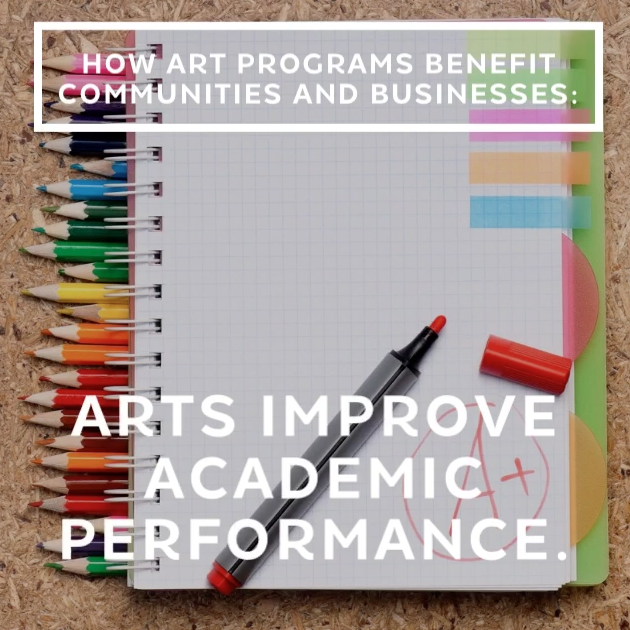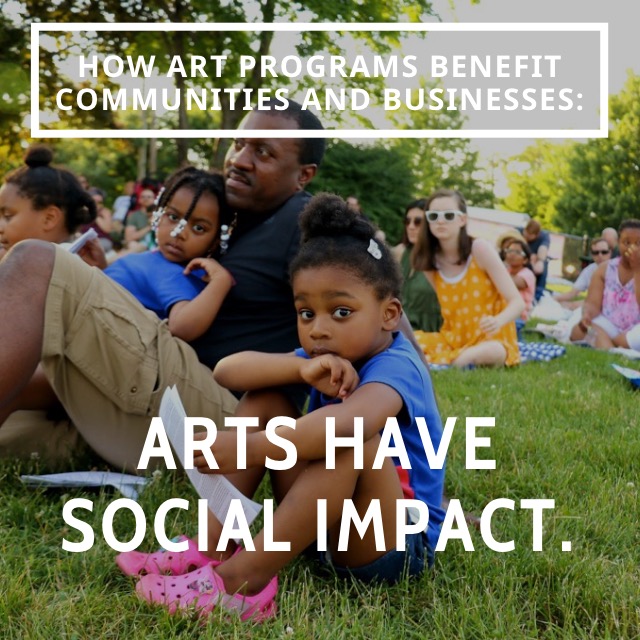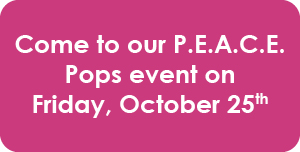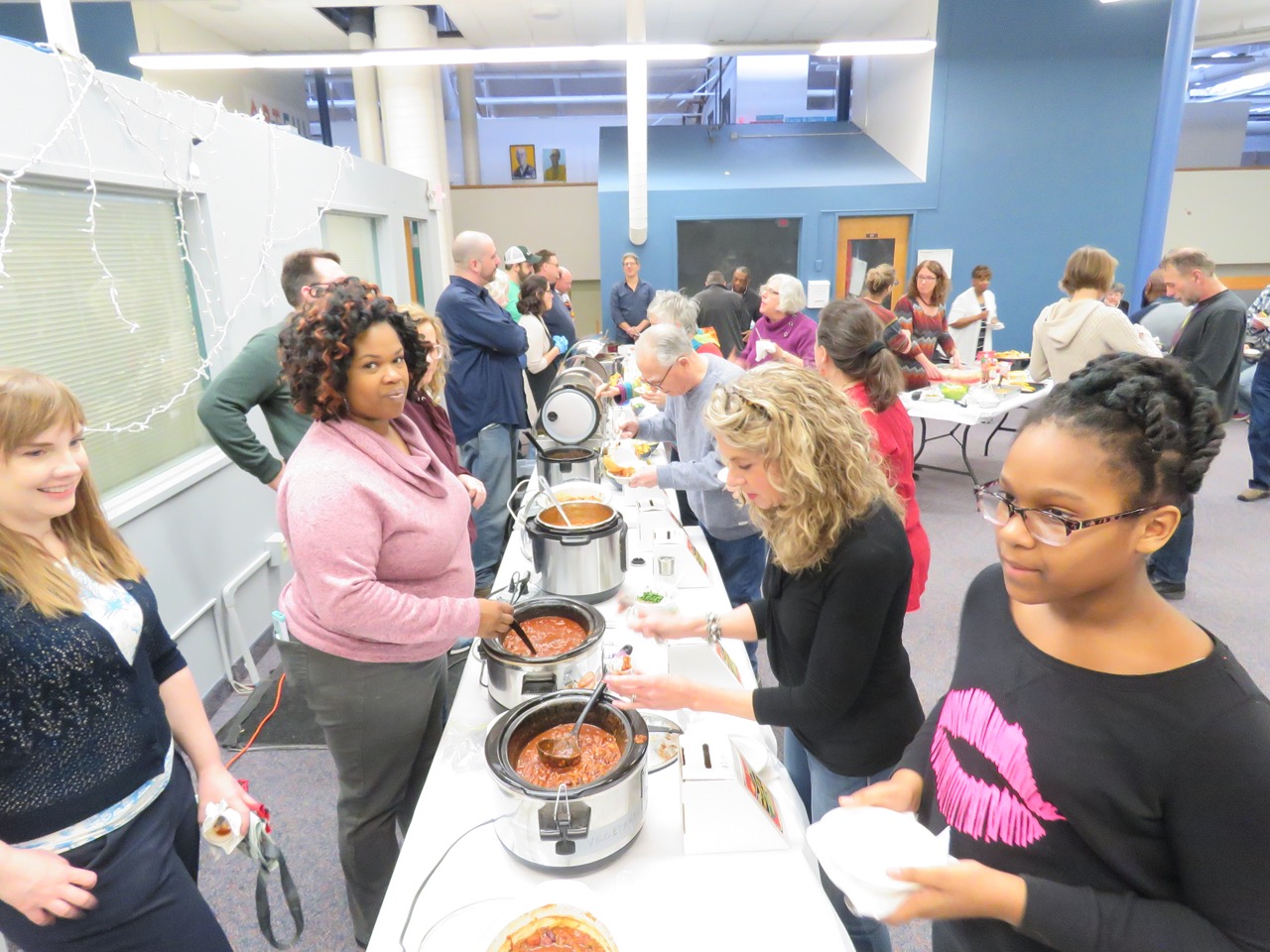Landlord’s Survey Results.

The results from our landlord’s survey regarding the fate of the Coventry P.E.A.C.E. Building are in and collectively convey a strong message that the Coventry P.E.A.C.E. Arts, Culture & Education Center is a cherished and integral part of the community. There is overwhelming support for preserving the building and its continued use as a hub for nonprofit organizations and community activities.
Following the release of the survey results, the Library (landlord) announced they were postponing their planned “working group” sessions scheduled for August 8th.
What the survey and meeting results show:
- Residents from all over Cleveland Heights and University Heights participated in the Library’s survey and their Public Meeting/Listening Session.
-
- Neighborhoods such as Coventry, Grant Deming, Noble, Cedar Lee, and others were well represented.
- The survey had apx. 1,471 responses
-
- This is nearly double the responses to their 2013 Community Survey and 5x more respondents than their Park Survey in 2018.
-
-
- Participants come from a wide range of age groups.
-
- This indicates that the issue of the Coventry P.E.A.C.E. building resonates across different generations within the community.
-
- Residents overwhelmingly do NOT support demolition of the building.
- There’s strong support for longer-term leases for existing tenants so they can continue their services while a comprehensive plan is developed.
- Many respondents emphasized the importance of supporting the current non-profit tenants in the building.
- The survey results show a wide range of opinions on how the capital expenses should be funded.
-
- While there is significant support for funding the capital expenses through traditional means like tax increases or having the Cities contribute, there is also a strong interest in alternative funding approaches like:
-
- Seeking grants and/or donations.
- Involving the tenants in raising funds.
- Selling the building.
-
- While there is significant support for funding the capital expenses through traditional means like tax increases or having the Cities contribute, there is also a strong interest in alternative funding approaches like:
-
- The community strongly favors keeping the Coventry PEACE Building in public or non-profit use, with an emphasis on finding sustainable solutions that align with its deed restrictions.
- Residents from all over Cleveland Heights and University Heights love our Library system, but they also value the building’s current role as an Arts, Culture and Education Center and non-profit hub.
-
- They encourage the Library to see this as an opportunity instead of a problem.
-
- The overall consensus is that the Coventry PEACE Building is a valued community asset that should be preserved and enhanced.
-
- The community is eager to be involved in the process and seeks transparent, collaborative solutions to ensure the building continues to serve its important role in supporting local arts, culture, and education.
-
Digging deeper into the “other” answers:
Support for Current Tenants: Many respondents emphasized the importance of supporting the current non-profit tenants in the building. They suggest providing long-term leases to allow these organizations to secure funding for necessary improvements and to continue their valuable community services.
Maintaining the Building: There is significant opposition to demolishing the building. Respondents prefer finding funds for capital improvements through grants, fundraising, or other means. Some also suggest reducing library expenses elsewhere to allocate funds to the PEACE Building.
Library’s Role: A common sentiment is that the library should not be in the property management business for non-library buildings. Some respondents suggest selling the building to the current tenants or another entity that can manage it better.
Community Use and Engagement: Suggestions include enhancing the building’s role as a community and arts center, increasing community engagement, and developing more programs that connect the library, the community, and local artists.
Transparency and Collaboration: Respondents call for more transparency from the library board and a collaborative approach with the current tenants to devise a sustainable plan for the building. They stress the need for open communication and a cooperative relationship.
Key take-aways from questions #1, #2, #3 & #4
Diverse Neighborhood Representation: The respondents to the survey and attendees at the Library’s public meeting come from a wide range of neighborhoods within the Cleveland Heights/University Heights area. Neighborhoods commonly represented include:
- Coventry
- Grant Deming
- Noble
- Cedar Lee
There was also significant representation from University Heights.
Diverse Age Representation: The survey responses come from a wide range of age groups, indicating that the issue of the Coventry P.E.A.C.E. building resonates across different generations within the community.
[Question #1: Do you live in Cleveland Heights/University Heights?]
[Question #2: If you live in Cleveland Heights/University Heights, what neighborhood do you live in?]
[Question #3: What is your zip code?]
[Question #4: What is your age?]
Key take-aways from questions #5, #6, #7, #8 & #9
High Awareness: A significant majority of respondents are aware that the Heights Libraries owns the Coventry PEACE Building. This indicates that the community is well-informed about the ownership and management of the building, which is crucial for meaningful engagement in discussions about its future.
A Beloved Community Hub: The Coventry P.E.A.C.E. Campus, encompassing the building, library, and park, is a cherished destination for many in our community. Even those who don’t visit regularly express strong support and take pride in the campus, its institutions, and the vibrant organizations and activities it hosts.
Awareness of Specific Improvements: A significant majority of respondents are aware of the Noble Branch and Coventry Branch improvements but only a moderate number of respondents are familiar with the Library’s P.E.A.C.E. Park initiative and improvements.
[Question #5: Are you aware that the Heights Libraries owns the former Coventry Elementary School Building, also known as the Coventry PEACE Building?]
[Question #6: During the last twelve months, how many times have you visited the Coventry PEACE Building?]
[Question #7: During the last 12 months, how many times have you visited the Coventry playground or community space surrounding the PEACE Building?]
[Question #8: Are you aware of improvements the Library has made in the community? Choose any of the following about which you are aware.]
[Question #9: If you have visited any of the Heights Libraries at least three times thisyear, which branches do you frequent?]
Key take-aways from question #10
Diverse Opinions on Funding: The survey results show a wide range of opinions on how the capital expenses should be funded.
- While there is significant support for funding the capital expenses through traditional means like tax increases or having the Cities contribute, there is also a strong interest in alternative funding approaches like:
-
- Seeking grants and/or donations.
- Involving the tenants in raising funds.
- Selling the building.
-
[Question #10: Do you think Heights Libraries should pay for capital expenses for theCoventry PEACE Building by any of the following? Chose one.
- Asking voters for a modest increase in their property taxes.
- Institute a modest cut back of library services at all of our other buildings and use the dollars we save to update theCoventry PEACE Building.
- Ask the cities of Cleveland Heights and University Heights for money to pay for the capital improvements.
- Don’t make capital improvements to the building.
- Other (please specify)]
Key take-aways from question #11
Demolition is not an option: Residents overwhelmingly do NOT support demolition of the building.
Keep the P.E.A.C.E. is preferred: The community strongly favors keeping the Coventry PEACE Building in public or non-profit use, with an emphasis on finding sustainable solutions that align with its deed restrictions.
[Question #11: The Library will not sell the building to a developer for private housing because the existing deed restrictions provide only for educational and public uses, and this will be honored. With that in mind, which of the following actions would you recommend to the library?
- Find an alternate, non-profit, public or educational use for the building that is sustainable, with funds to make necessary capital improvements. The library would not sell surrounding land or parking lot.
- Demolish the building and expand the park.
- Other (please specify)]
Key take-aways from question #12
Strong Opposition to Demolition: While this question did not allow for a response that reflects opposition to demolishing the building or an option for maintaining the current Arts, Culture and Education Center that is currently located here, many comments in the “Other” category express opposition to demolishing the building, with respondents suggesting alternative uses that preserve the structure or repurpose it for community benefit.
[Question #12: If the building were demolished, what do you think the library should do with the property?
- Enlarge the open area with lawn or meadow.
- Enlarge the Mini-Urban Forest that was recently created behind the building.
- Please use box below for your ideas.]
Key take-aways from question #13
Support for Arts and Community Spaces: The overall consensus is that the Coventry PEACE Building is a valued community asset that should be preserved and enhanced.
- The community is eager to be involved in the process and seeks transparent, collaborative solutions to ensure the building continues to serve its important role in supporting local arts, culture, and education.
[Question #13: Thank you very much for taking the time to answer this survey. Exit takes you to main library web page. Please add any comments you have in the box below.]
The positive impact of community arts programs on local economies, community engagement, property values, and crime reduction:

Economic Impact
For every $1 invested in the arts, communities see a $5 to $7 return in local economic activity.
Source: Americans for the Arts. “Arts & Economic Prosperity Report.”
Job Creation
The arts sector creates jobs at a rate of 4.61 full-time equivalent positions per $100,000 of spending.
Source: Americans for the Arts. “Arts & Economic Prosperity Report.”
Tourism Boost
Cities with vibrant arts scenes see a 25% increase in tourism revenue.
Source: National Governors Association. “New Engines of Growth: Five Roles for Arts, Culture and Design.”
Business Attraction
Companies are 35% more likely to relocate to areas with robust arts and cultural amenities.
Source: The Conference Board. “Ready to Innovate.”
Consumer Spending
Arts attendees spend an average of $31.47 per person, per event, beyond the cost of admission.
Source: Americans for the Arts. “Arts & Economic Prosperity Report.”
GDP Contribution
Arts and culture contribute more than $800 billion annually to the U.S. economy, or 4.3% of the GDP.
Source: Bureau of Economic Analysis. “Arts and Cultural Production Satellite Account.”
Startup Growth
Cities with strong arts communities see a 15% higher rate of startup growth.
Source: Urban Institute. “Arts and Culture in Urban or Regional Planning: A Review and Research Agenda.”
Tax Revenue
The arts sector generates substantial tax revenue, with local governments receiving $7.9 billion annually.
Source: Americans for the Arts. “Arts & Economic Prosperity Report.”
Economic Revitalization
Communities with active arts programs report a 20% increase in economic revitalization efforts.
Source: The National Endowment for the Arts. “Creative Placemaking.”
Sales Impact
The non-profit arts industry generates $166.3 billion in economic activity annually, supporting 4.6 million jobs.
Source: Americans for the Arts. “Arts & Economic Prosperity Report.”
Civic Engagement
Participation in community arts increases civic engagement by 28%.
Source: National Endowment for the Arts. “The Arts and Civic Engagement.”
Volunteerism
Communities with strong arts programs see a 35% increase in volunteerism.
Source: Americans for the Arts. “Arts & Economic Prosperity Report.”
Voter Participation
Arts-engaged individuals are 15% more likely to vote.
Source: National Endowment for the Arts. “The Arts and Civic Engagement.”
Social Capital
Arts participation boosts social capital, enhancing community cohesion and collaboration.
Source: Social Impact of the Arts Project (SIAP). “Cultural Indicators Project.”
Community Events
Arts programs often lead to a 50% increase in community events and gatherings.
Source: National Endowment for the Arts. “The Arts and Civic Engagement.”
Public Spaces
Arts initiatives improve public spaces, increasing their use by 30%.
Source: Project for Public Spaces. “Creative Placemaking.”
Youth Engagement
Arts programs can engage youth, reducing idle time by 40%.
Source: National Guild for Community Arts Education. “The Impact of Community-Based Arts Programs.”
Intergenerational Interaction
Arts programs foster intergenerational interaction, with a 25% increase in participation by both young and old.
Source: Americans for the Arts. “Arts & Economic Prosperity Report.”
Cultural Awareness
Arts programs enhance cultural awareness, leading to a 20% increase in community harmony.
Source: National Assembly of State Arts Agencies. “Advancing Arts Education through an Expanded School Day.”
Neighborhood Networks
Participation in the arts strengthens neighborhood networks by 22%.
Source: University of Pennsylvania. “Social Impact of the Arts Project (SIAP).”


Property Value Increase
Property values in neighborhoods with active arts programs increase by 20%.
Source: American Planning Association. “How Arts and Cultural Strategies Create, Reinforce, and Enhance Sense of Place.”
Attractiveness
60% of real estate agents say properties near cultural districts are more attractive to buyers.
Source: Urban Land Institute. “Creative Placemaking in Real Estate.”
Reduced Vacancy
Arts programs contribute to a 25% reduction in property vacancies.
Source: National Endowment for the Arts. “Our Town: Arts-Based Community Development Investments.”
Urban Renewal
Arts initiatives play a key role in urban renewal, leading to a 15% increase in property investments.
Source: National Endowment for the Arts. “The Arts and Economic Growth.”
Historic Preservation
Arts programs often contribute to the preservation and revitalization of historic properties, increasing their value by 18%.
Source: The National Trust for Historic Preservation. “The Impact of Arts and Culture on Historic Preservation.”
Community Investment
Neighborhoods with arts programs see a 30% increase in community investment.
Source: Americans for the Arts. “Arts & Economic Prosperity Report.”
Public Perception
Public perception of safety and attractiveness increases by 35% in areas with visible arts programs.
Source: The Trust for Public Land. “Creative Placemaking: Integrating Art into Public Spaces.”
New Developments
Areas with strong arts communities attract 25% more new developments.
Source: Urban Institute. “Arts and Culture in Urban or Regional Planning: A Review and Research Agenda.”
Commercial Value
Commercial properties near arts districts see a 15% increase in value.
Source: National Endowment for the Arts. “How the Arts Impact Property Values.”
Juvenile Delinquency Reduction
Participation in arts programs is associated with a 29% reduction in juvenile delinquency and youth crime rates.
Source: The National Endowment for the Arts. “The Arts and Achievement in At-Risk Youth.”
After-School Arts Programs
After-school arts programs reduce risky behavior in youth by 71%.
Source: The YouthARTS Development Project. “YouthARTS: Arts Programs for Youth At Risk.”
Gang Involvement
Arts education decreases the likelihood of gang involvement by providing constructive and engaging activities.
Source: Justice Arts Coalition. “Impact of Arts on Recidivism.”
Community Cohesion
Neighborhoods with active arts programs report a 25% decrease in neighborhood crime rates due to increased community cohesion.
Source: The Urban Institute. “The Arts and Community Safety.”
Violence Prevention
Communities with robust arts programs see a 20% reduction in violence-related incidents.
Source: The American Journal of Public Health. “The Connection Between Art, Healing, and Public Health.”
Conflict Resolution Skills
Arts programs improve conflict resolution skills, decreasing interpersonal violence by 30%.
Source: Americans for the Arts. “The Arts and Conflict Resolution.”
Substance Abuse Prevention
Youth engaged in arts programs are 55% less likely to use drugs compared to their peers.
Source: National Endowment for the Arts. “The Arts and Achievement in At-Risk Youth.”
Safer School Environments
Schools with strong arts curricula report 45% fewer disciplinary issues.
Source: The Center for Arts Education. “Staying in School: Arts Education and New York City High School Graduation Rates.”
Neighborhood Safety
Residents in arts-rich neighborhoods feel 30% safer.
Source: National Endowment for the Arts. “Creative Placemaking: Improving Safety in Public Spaces.”
Community Pride
Community arts programs increase local pride, leading to a 20% reduction in vandalism.
Source: Americans for the Arts. “The Social Impact of the Arts.”
Public Art
The presence of public art is linked to a 15% decrease in property crimes.
Source: Project for Public Spaces. “Creative Placemaking.”
Street Engagement
Areas with street arts and performances see a 25% reduction in petty crime.
Source: National Endowment for the Arts. “How Arts Programming Reduces Crime.”
Youth Employment
Arts programs provide employment opportunities for youth, reducing crime by 20%.
Source: The Aspen Institute. “Youth Employment Programs: An Economic Impact Analysis.”
Mentorship
Arts programs with mentorship components reduce youth crime by 35%.
Source: The National Endowment for the Arts. “The Arts and Achievement in At-Risk Youth.”
School Attendance
Students involved in arts programs have a 30% higher school attendance rate, reducing truancy-related crimes.
Source: The National Endowment for the Arts. “The Arts and Achievement in At-Risk Youth.”

List of supporters
If you believe in the Coventry PEACE Campus Project, and the organizations we support, please add your name to our supporters list. By sharing with our community the names of those who want to see this project carried forward, you can inspire others to join us, too.
Come to our P.E.A.C.E. Pops Event
We certainly hope this will not be our last P.E.A.C.E. Pops, but it just might be. So, please mark your calendar now! Our Halloween P.E.A.C.E. Pops is one of our most popular events of the year. There's fun for ALL ages. In addition to Open Studios at ARTFUL, we'll also have Spooky Stories with Lake Erie Ink, a haunted tunnel and black light drawing area, professionally led line-dancing, a room-sized board game, giant, wandering P.E.A.C.E. puppets, cocktails & more!
Advocacy toolkit
Download a digital version of our advocacy toolkit and share with others.
Sign up for emails
Be sure you are receiving our latest news and event listings.
Get our graphics
Use our images for your social media profiles and cover images.
Watch and share the videos below.
Stay up-to-date on the latest Coventry PEACE Campus news and events – sign up to receive emails or follow us on social media.
Emails & Newsletters
Occassionally we send out updates, event information and newsletters via email. Click on the link below to sign up to receive information via email.
Social Media.
Coventry PEACE Campus can be found on several social media platforms. Click on the button below to find us online and be sure to like/follow us!
What is Coventry PEACE Campus?
When the school district sought to divest itself from the former Coventry Elementary School building in 2017, leaving its future uncertain, the leaders of all the tenant organizations and a broad base of community supporters came together in a grassroots movement to propose ways to preserve and grow the thriving arts, culture and education hub that had organically taken root there. From this effort, the Coventry PEACE Campus came into being. The Coventry P.E.A.C.E. building currently houses a dozen local and regional nonprofits. It is our goal to provide an accessible, sustainable, more efficient, and affordable home for these nonprofits, and to attract new organizations to the building.


